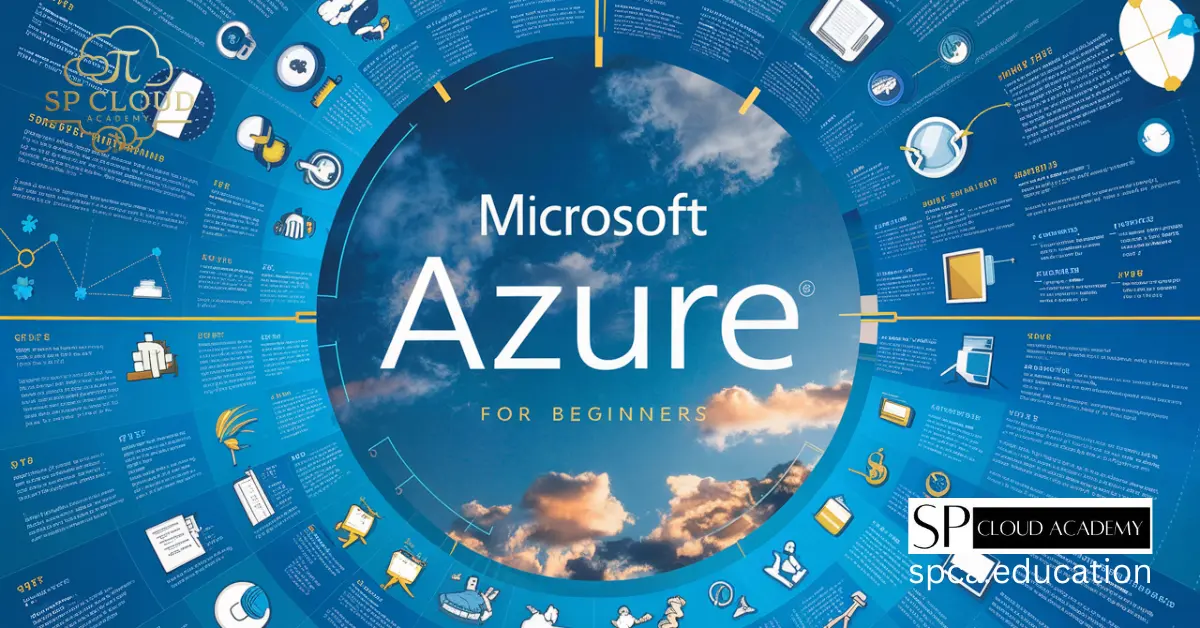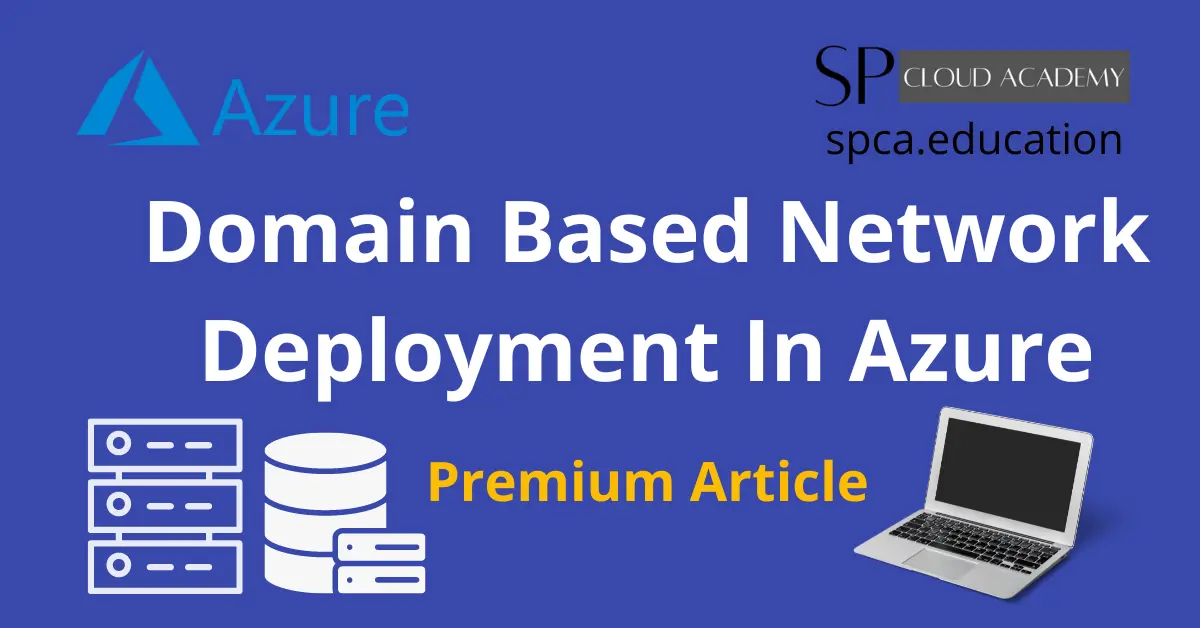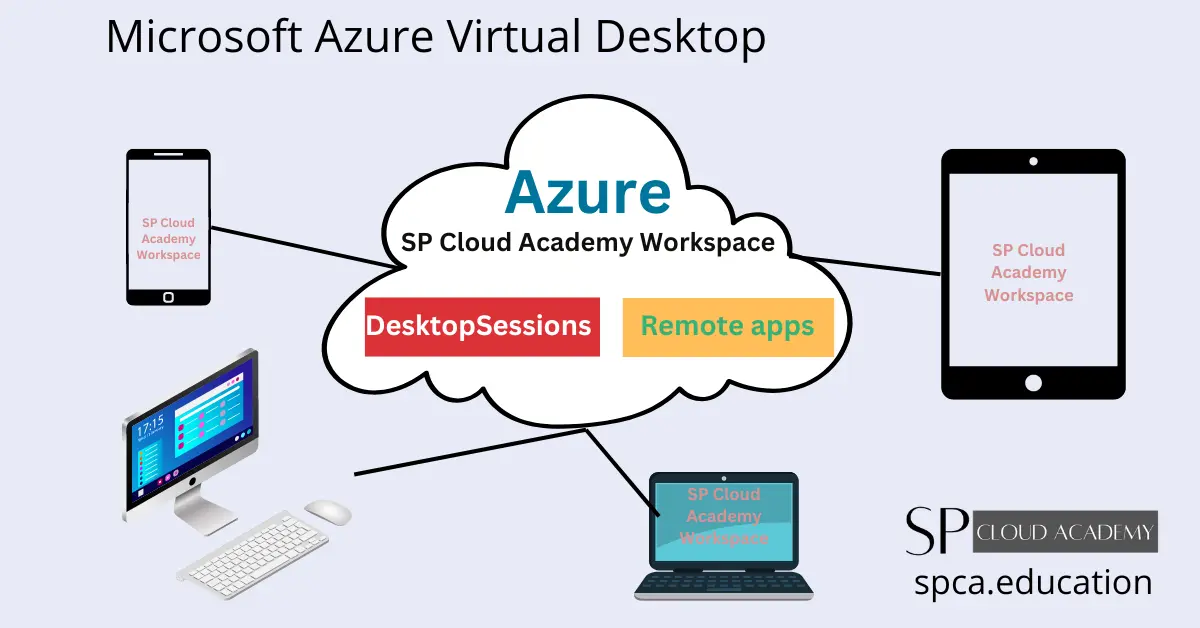In the ever-evolving world of cloud computing, Microsoft Azure has consistently been at the forefront, offering a wide array of services that cater to businesses of all sizes. As we move into 2025, Azure continues to innovate, introducing new features and services that are shaping the future of cloud technology. This comprehensive guide will delve into the latest trends, features, and innovations in Azure services, providing you with a detailed understanding of what to expect in 2025.
Table of Contents
- Introduction
- The Evolution of Azure
- Key Trends in Azure Services for 2025
- 3.1. Increased Adoption of AI and Machine Learning
- 3.2. Expansion of Edge Computing
- 3.3. Enhanced Security and Compliance Features
- 3.4. Growth of Serverless Computing
- 3.5. Integration of Quantum Computing
- Azure Services Overview
- 4.1. Compute Services
- 4.2. Storage Services
- 4.3. Networking Services
- 4.4. Database Services
- 4.5. AI and Machine Learning Services
- 4.6. IoT Services
- 4.7. Security and Compliance Services
- 4.8. Developer Tools
- 4.9. Management and Governance Tools
- Innovative Features in Azure Services for 2025
- 5.1. Azure Arc: Unified Multi-Cloud Management
- 5.2. Azure Synapse Analytics: Advanced Data Integration
- 5.3. Azure Quantum: Pioneering Quantum Computing
- 5.4. Azure Percept: AI at the Edge
- 5.5. Azure Purview: Comprehensive Data Governance
- Case Studies: Real-World Applications of Azure Services in 2025
- 6.1. Healthcare: Revolutionizing Patient Care with AI
- 6.2. Retail: Enhancing Customer Experience with IoT
- 6.3. Finance: Ensuring Compliance with Advanced Security Features
- Future Prospects: What Lies Ahead for Azure Services
- Conclusion
The Evolution of Azure
Microsoft Azure, launched in 2010, has grown exponentially over the years. Initially offering a limited set of services, Azure has expanded its portfolio to include over 200 products and services, catering to various industries and use cases. The platform’s growth has been driven by Microsoft’s commitment to innovation, customer feedback, and the ever-increasing demand for cloud computing solutions.
In 2025, Azure is not just a cloud platform; it’s an ecosystem that integrates seamlessly with on-premises environments, other cloud providers, and emerging technologies like AI, IoT, and quantum computing. This evolution has positioned Azure as a leader in the cloud industry, offering unparalleled flexibility, scalability, and security.
Key Trends in Azure Services for 2025
3.1. Increased Adoption of AI and Machine Learning
Artificial Intelligence (AI) and Machine Learning (ML) are no longer futuristic concepts; they are integral to modern business operations. In 2025, Azure is expected to further enhance its AI and ML capabilities, making it easier for businesses to integrate these technologies into their workflows.
Azure’s AI and ML services, such as Azure Machine Learning, Cognitive Services, and Bot Services, are continuously updated with new features. These updates include improved model training, enhanced natural language processing, and more robust computer vision capabilities. Businesses can leverage these services to automate processes, gain insights from data, and create intelligent applications.
3.2. Expansion of Edge Computing
Edge computing is gaining traction as businesses seek to process data closer to the source, reducing latency and improving performance. Azure’s edge computing solutions, including Azure IoT Edge and Azure Stack Edge, are expected to see significant advancements in 2025.
These advancements will include better integration with AI and ML models, allowing businesses to run complex algorithms at the edge. Additionally, Azure is likely to introduce new hardware options and software updates that enhance the capabilities of edge devices, making them more versatile and efficient.
3.3. Enhanced Security and Compliance Features
As cyber threats become more sophisticated, the need for robust security and compliance measures is paramount. Azure has always been a leader in cloud security, and in 2025, it is expected to introduce even more advanced features.
These features may include enhanced threat detection, automated response mechanisms, and improved compliance tools. Azure’s Security Center and Azure Sentinel are likely to receive updates that provide better visibility into security threats and more effective ways to mitigate them. Additionally, Azure will continue to expand its compliance offerings, ensuring that businesses can meet regulatory requirements across various industries.
3.4. Growth of Serverless Computing
Serverless computing is becoming increasingly popular as businesses look to reduce infrastructure management overhead and focus on application development. Azure Functions, Azure’s serverless computing service, is expected to see significant growth in 2025.
New features may include improved scalability, better integration with other Azure services, and enhanced developer tools. These updates will make it easier for businesses to build and deploy serverless applications, reducing time-to-market and operational costs.
3.5. Integration of Quantum Computing
Quantum computing is one of the most exciting areas of technological innovation, and Azure is at the forefront of this revolution. Azure Quantum, Microsoft’s quantum computing service, is expected to make significant strides in 2025.
Azure Quantum provides businesses with access to quantum hardware and software, allowing them to experiment with quantum algorithms and solve complex problems. In 2025, Azure is likely to introduce new quantum computing solutions, including more powerful quantum processors and advanced development tools. These innovations will enable businesses to explore new possibilities in fields like cryptography, optimization, and material science.
Azure Services Overview
4.1. Compute Services
Azure’s compute services are the backbone of its cloud platform, providing the infrastructure needed to run applications and workloads. Key compute services include:
- Azure Virtual Machines (VMs): Scalable, on-demand virtual machines that support a wide range of operating systems and applications.
- Azure Kubernetes Service (AKS): A managed Kubernetes service that simplifies container orchestration and management.
- Azure App Service: A platform for building, deploying, and scaling web apps and APIs.
- Azure Functions: A serverless compute service that allows you to run event-driven code without managing infrastructure.
4.2. Storage Services
Azure offers a variety of storage solutions to meet different business needs. These include:
- Azure Blob Storage: A scalable object storage solution for unstructured data like images, videos, and documents.
- Azure File Storage: A fully managed file share service that supports SMB and NFS protocols.
- Azure Disk Storage: High-performance, durable block storage for virtual machines.
- Azure Data Lake Storage: A scalable data lake solution for big data analytics.
4.3. Networking Services
Azure’s networking services enable businesses to build secure, high-performance networks in the cloud. Key services include:
- Azure Virtual Network (VNet): A secure, isolated network environment for Azure resources.
- Azure Load Balancer: A high-performance load balancer that distributes traffic across multiple resources.
- Azure Content Delivery Network (CDN): A global CDN that delivers content with low latency and high availability.
- Azure ExpressRoute: A private connection between on-premises infrastructure and Azure data centers.
4.4. Database Services
Azure’s database services provide managed solutions for relational and non-relational databases. Key services include:
- Azure SQL Database: A fully managed relational database service based on SQL Server.
- Azure Cosmos DB: A globally distributed, multi-model database service for NoSQL data.
- Azure Database for MySQL/PostgreSQL: Managed database services for MySQL and PostgreSQL.
- Azure Cache for Redis: An in-memory data store for caching and real-time analytics.
4.5. AI and Machine Learning Services
Azure’s AI and ML services empower businesses to build intelligent applications. Key services include:
- Azure Machine Learning: A comprehensive platform for building, training, and deploying ML models.
- Azure Cognitive Services: Pre-built AI models for vision, speech, language, and decision-making.
- Azure Bot Service: A platform for building and deploying intelligent bots.
- Azure Databricks: An Apache Spark-based analytics platform for big data and AI.
4.6. IoT Services
Azure’s IoT services enable businesses to connect, monitor, and manage IoT devices at scale. Key services include:
- Azure IoT Hub: A cloud gateway for managing IoT devices and data.
- Azure IoT Edge: A platform for running AI and analytics on IoT devices.
- Azure Digital Twins: A service for creating digital models of physical environments.
- Azure Time Series Insights: A fully managed analytics service for time-series data.
4.7. Security and Compliance Services
Azure’s security and compliance services help businesses protect their data and meet regulatory requirements. Key services include:
- Azure Security Center: A unified security management system for Azure resources.
- Azure Sentinel: A cloud-native SIEM (Security Information and Event Management) solution.
- Azure Key Vault: A service for managing cryptographic keys and secrets.
- Azure Policy: A service for enforcing compliance policies across Azure resources.
4.8. Developer Tools
Azure provides a range of tools to support developers in building, deploying, and managing applications. Key tools include:
- Azure DevOps: A suite of development tools for CI/CD, version control, and project management.
- Visual Studio Code: A lightweight, cross-platform code editor with Azure integration.
- Azure CLI: A command-line interface for managing Azure resources.
- Azure SDKs: Language-specific SDKs for building Azure applications.
4.9. Management and Governance Tools
Azure’s management and governance tools help businesses optimize their cloud resources and ensure compliance. Key tools include:
- Azure Monitor: A comprehensive monitoring solution for Azure resources.
- Azure Cost Management: A tool for tracking and optimizing cloud spending.
- Azure Blueprints: A service for creating and managing compliant cloud environments.
- Azure Resource Manager: A management layer for deploying and managing Azure resources.
Innovative Features in Azure Services for 2025
5.1. Azure Arc: Unified Multi-Cloud Management
Azure Arc is a game-changer for businesses operating in multi-cloud and hybrid environments. In 2025, Azure Arc is expected to introduce new features that enhance its ability to manage resources across different cloud providers and on-premises environments.
These features may include improved resource tagging, enhanced policy enforcement, and better integration with third-party tools. Azure Arc will enable businesses to achieve greater consistency and control over their cloud resources, regardless of where they are located.
5.2. Azure Synapse Analytics: Advanced Data Integration
Azure Synapse Analytics is a powerful analytics service that integrates big data and data warehousing. In 2025, Azure Synapse is expected to introduce new features that make it even easier to analyze and visualize data.
These features may include enhanced data integration capabilities, improved performance, and new AI-driven analytics tools. Azure Synapse will enable businesses to gain deeper insights from their data, driving better decision-making and innovation.
5.3. Azure Quantum: Pioneering Quantum Computing
Azure Quantum is at the cutting edge of quantum computing, and in 2025, it is expected to introduce new solutions that push the boundaries of what is possible. These solutions may include more powerful quantum processors, advanced development tools, and new quantum algorithms.
Azure Quantum will enable businesses to explore new possibilities in fields like cryptography, optimization, and material science, driving innovation and competitive advantage.
5.4. Azure Percept: AI at the Edge
Azure Percept is a platform that brings AI to the edge, enabling businesses to run AI models on IoT devices. In 2025, Azure Percept is expected to introduce new features that enhance its capabilities.
These features may include improved model training, better integration with Azure AI services, and new hardware options. Azure Percept will enable businesses to deploy intelligent edge solutions that improve efficiency and drive innovation.
5.5. Azure Purview: Comprehensive Data Governance
Azure Purview is a data governance service that helps businesses manage and protect their data. In 2025, Azure Purview is expected to introduce new features that enhance its ability to provide comprehensive data governance.
These features may include improved data discovery, enhanced data classification, and better integration with third-party tools. Azure Purview will enable businesses to achieve greater visibility and control over their data, ensuring compliance and reducing risk.
Case Studies: Real-World Applications of Azure Services in 2025
6.1. Healthcare: Revolutionizing Patient Care with AI
In 2025, a leading healthcare provider leveraged Azure’s AI and ML services to revolutionize patient care. By integrating Azure Machine Learning and Cognitive Services into their workflows, the provider was able to automate diagnostic processes, predict patient outcomes, and personalize treatment plans.
The result was a significant improvement in patient outcomes, reduced operational costs, and enhanced patient satisfaction. The healthcare provider also used Azure’s security and compliance features to ensure that patient data was protected and compliant with regulatory requirements.
6.2. Retail: Enhancing Customer Experience with IoT
A global retail chain used Azure’s IoT services to enhance the customer experience in 2025. By deploying Azure IoT Edge and Azure Digital Twins, the retailer was able to create a connected store environment that provided real-time insights into customer behavior.
These insights enabled the retailer to optimize store layouts, improve inventory management, and deliver personalized shopping experiences. The retailer also used Azure’s AI services to analyze customer data and predict future trends, driving innovation and competitive advantage.
6.3. Finance: Ensuring Compliance with Advanced Security Features
A leading financial institution used Azure’s security and compliance services to ensure compliance with regulatory requirements in 2025. By leveraging Azure Security Center and Azure Sentinel, the institution was able to detect and respond to security threats in real-time.
The institution also used Azure Policy and Azure Blueprints to enforce compliance policies across its cloud resources. The result was a secure, compliant cloud environment that reduced risk and ensured regulatory compliance.
Future Prospects: What Lies Ahead for Azure Services
As we look beyond 2025, the future of Azure services is bright. Microsoft’s commitment to innovation and customer feedback will continue to drive the development of new features and services. Emerging technologies like AI, IoT, and quantum computing will play a significant role in shaping the future of Azure, enabling businesses to achieve new levels of efficiency, innovation, and competitive advantage.
In the coming years, we can expect to see even greater integration between Azure and other Microsoft products, as well as enhanced support for multi-cloud and hybrid environments. Azure will continue to be a leader in the cloud industry, providing businesses with the tools and services they need to succeed in an increasingly digital world.
Conclusion
Microsoft Azure has come a long way since its inception, and in 2025, it continues to be a leader in the cloud computing industry. With its wide array of services, innovative features, and commitment to security and compliance, Azure is well-positioned to meet the needs of businesses in an increasingly digital world.
As we move into 2025, businesses can expect to see even more advancements in Azure services, particularly in areas like AI, edge computing, and quantum computing. By leveraging these services, businesses can drive innovation, improve efficiency, and achieve competitive advantage.
Whether you’re a small business looking to scale or a large enterprise seeking to optimize your cloud resources, Azure has the tools and services you need to succeed. The future of cloud computing is here, and it’s powered by Azure.
See Also
-

Unlock the Cloud: How Azure for Education Makes Learning Smarter and Simpler
-

Step-by-Step Guide: Deploying a XAMPP Web Hosting Server on Azure Windows VM for WordPress
-

The Ultimate Guide to Azure Services in 2025: Trends, Features & Innovations
-

Getting Started with Microsoft Azure: A Beginner’s Guide
-

Domain Based Network Deployment In Azure
-

Azure Virtual Desktop Deployment